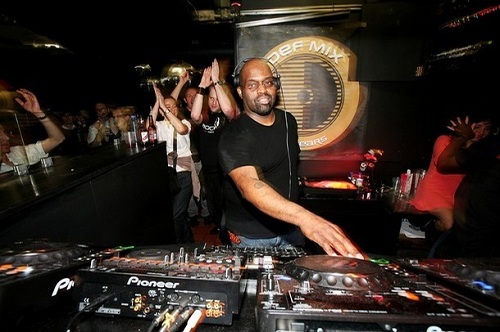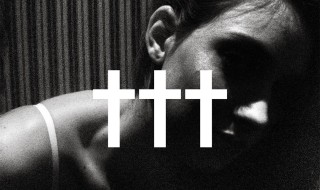
HOUSE MUSIC ALL NIGHT LONG ALL NGHT LONG
Not widely accepted by the mainstream clubbing set of the early 1980s, gay black and Latino men held parties in a large empty building called the Warehouse, located in an industrial area of Chicago. Music fans gathered and the factory soon became a new type of nightclub. Loud music and free entrance attracted large crowds. The building owner eventually hired a young DJ from New York named Frankie Knuckles. Music played at the Warehouse was different from the top 40 hits many clubs featured. Frankie played old disco favorites, funk, R&B and underground cuts not yet released to the pop charts for runners to the House Music Record sound coming shortly.
Frankie Knuckles
Unlike other DJs, Knuckles played dance music with a twist. He accelerated the tempo to 120 to 135 beats per minute and enhanced tunes played from vinyl records with bass drums and synthesized elements that accentuated each beat of the song. This technique became known as a four on the floor beat. Instead of playing songs individually, Knuckles pieced together various crowd pumping tracks from disco, funk and soul records. He often repeated certain song elements and added electronic or vocal overtones. The loud, driving beat combined with political or suggestive lyrics soon attracted a heterosexual following.
Ron Hardy
Leonard “Remix” Roy, Ron Hardy and other DJs replicated this style of infused and layered music. Many recorded creations on reel to reel tape. Recording studios developed vinyl, long playing (LPs) records that featured tracks created by various DJs. Fans, so enamored with the sound, searched record stores in hopes of purchasing these soundtracks. Import, Etc. records obtained the LPs and sold them under the category “music played at the Warehouse.” The category eventually evolved into “house music” the most poular vinyl mixed today.
Hot Mix 5
Other warehouse clubs emerged and the Hot Mix 5 radio station in Chicago developed, featuring only house music. Fans and DJs spread the word about the new musical phenomenon, which quickly reached the east and west coasts of the U.S. From the major cities of the coast, the music soon spread to Montreal, Ontario, London and Paris. The new genre greatly influenced Britain’s pop scene and many artists included house music in their records. Artists experimented with different styles and tracks, developing dozens of variations of house music. By the 1990s, movie scores and top pop artists recorded their versions of house music.
In this decade, house music continues evolving. Music producers David Guetta, Daft Punk and Swedish House Mafia, along with numerous other DJs and producers, entertain audiences worldwide with an array of variations that include electro, progressive, techno and trance house music. Some of today’s artists prefer house music with elements of disco and funk. Other popular infusions contain more basic, tribal overtones. The common thread running through all house music is the ability to make people want to get up and dance.





